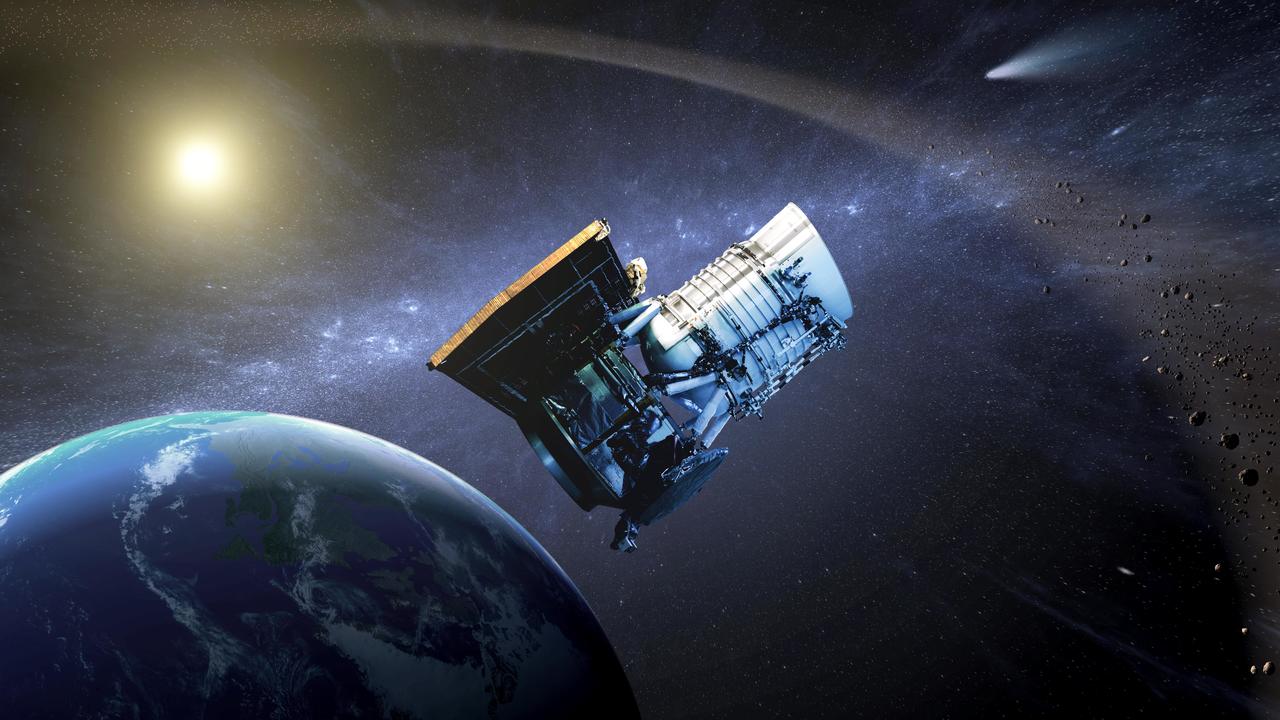
NEOWISE
Near-Earth Object Wide-field Infrared Survey Explorer
Overview: The NEOWISE project was the asteroid-hunting portion of the Wide-field Infrared Survey Explorer (WISE) mission. Funded by NASA's Planetary Science Division, NEOWISE harvested measurements of asteroids and comets from the WISE images and provided a rich archive for searching WISE data for solar system objects. During its primary mission which ended in February 2011, NEOWISE delivered large and rich infrared datasets of minor planets, including more than 34,000 new discoveries. NEOWISE data have also enabled the discovery of the first known Earth Trojan asteroid. After hibernating for over 2 years, NEOWISE survey observations resumed in December 2013 to learn more about the population of near-Earth objects and comets that could pose an impact hazard to the Earth. During its multiyear survey in the 3.4 and 4.6 μm infrared bands, NEOWISE rapidly characterized near-Earth objects (NEOs) and obtained accurate measurements of their diameters and albedos (how much light an object reflects). NEOWISE was equally sensitive to both light-colored asteroids and the optically dark objects that are difficult for ground-based observers to discover and characterize. Survey operations were completed on July 31, 2024. The spacecraft was decommissioned on August 8, 2024, and re-entered the Earth's atmosphere on November 1, 2024.
IPAC is responsible for ingestion and processing of raw data, production of final data products, and archiving mission science and engineering data. IPAC is also responsible for the distribution of WISE data to the community through NASA/IPAC Infrared Science Archive (IRSA). The IPAC Communications & Education team also supports public affairs and public outreach by preparing mission images for public release into the image gallery.








